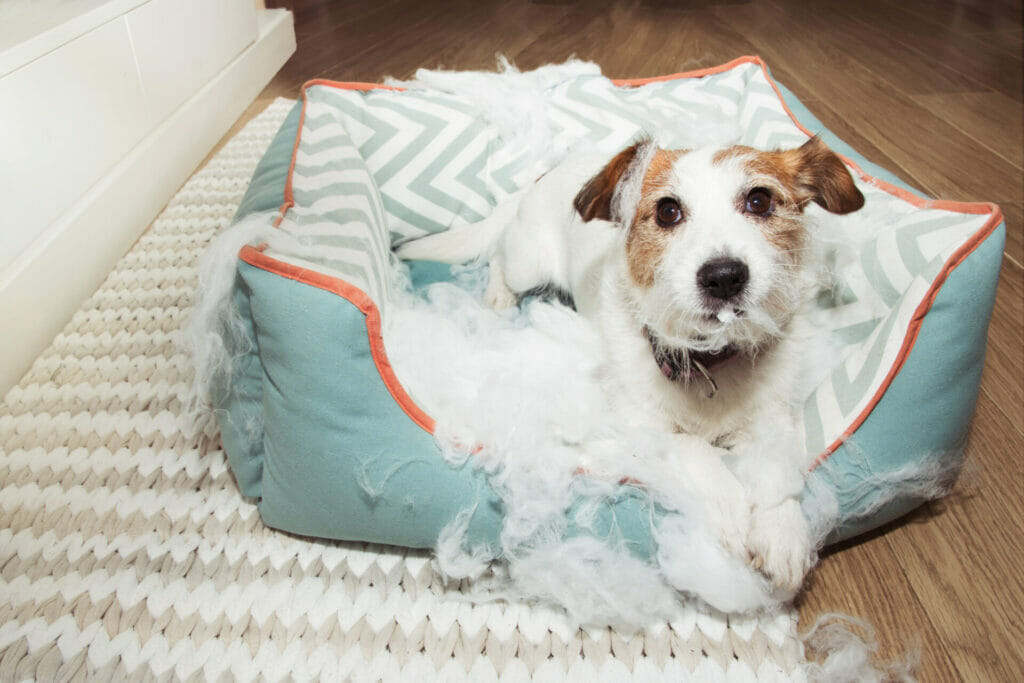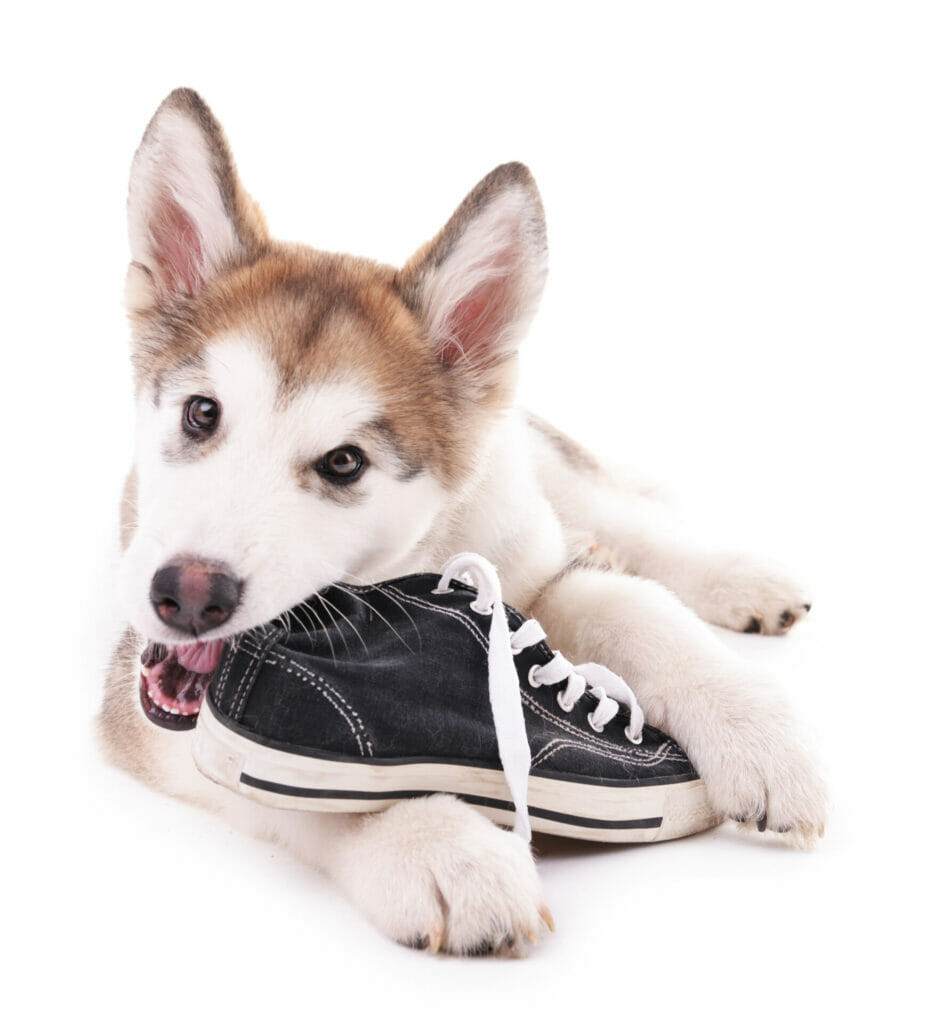Chewing on items around the house is a common behavioral issue that dog owners struggle with. Dogs taking household objects to chew can be frustrating if your dog chews up a favorite belonging. Chewing on household objects can also be dangerous for dogs if they get something that is poisonous or a choking hazard. Your dog doesn’t chew on things because they are bad or trying to chew up your favorite shoes or possessions. For example, children’s toys often look indistinguishable from dog toys, making them an easy target for household objects frequently taken by dogs. Luckily you can teach your dog not to take and chew objects they find around your house.
Prevention First:
The best way to stop your dog from chewing household items is to prevent the issue as much as possible. Try to dog-proof your home by moving any household objects, including shoes, magazines, and children’s toys, by keeping these items away from your dog. If you see your dog with something it shouldn’t have, take it from your dog and replace it with a toy or chew you want your dog to have.

The more you can set your dog up for success by keeping items they will be tempted by out of reach, the better. When dogs rehearse behaviors, they are more likely to repeat them. The fewer opportunities your dog has to chew on household objects, the less likely it will be to try to take and chew things from around the house and chew them up. Helping your dog be successful with not chewing on household objects first requires family members to take responsibility for picking up their belongings.
Provide Alternatives:
Next to preventing your dog from accessing items they should, the best way to prevent your dog from taking and chewing things is to ensure that your dog always has access to ample toys and chews. One of the primary reasons that dogs take household objects to chew is out of boredom. When dogs aren’t getting enough enrichment, they will find ways to entertain themselves. Providing your dog with a wide range of toys and chews can help prevent unwanted chewing by making sure your dog has plenty of their things to entertain themselves with, and they won’t go looking for other objects to take and chew.
Trade Don’t Chase:
If your dog takes and starts to chew something and then takes off running with it when you approach, you can teach your dog to trade instead. This is more effective than trying to wrestle items away from your dog. If you start chasing your dog to get things from them, your dog will likely think you’re playing a game and keep trying to keep the item away from you. The result is likely then that your dog will take off running with the household item wanting you to give chase. Instead of taking items away from your dog forcibly, we want to teach our dogs to trade an object they have for a treat.
For this activity, you want to use toys your dog loves and high-value treats your dog is really excited about. You’ll be using this to trade your dog in any instance where they start to chew on household objects. But to start, we will teach your dog to trade with less exciting objects and work up to more significant distractions.
Step 1: Start when your dog has a toy, show your dog the high-value treats and praise your dog when they drop the toy to get the treat.
Step 2: Repeat over several practice sessions and introduce your verbal cue of choice like “trade” or “give” as you show your dog the treat to trade for the toy or other object they have.
Step 3: Practice this skill regularly when your dog has different toys. Praise and reward your dog for trading the item they have for the high-value treat.
Step 4: The next time your dog takes an item and starts to chew on it, use this well-practiced behavior by asking your dog to trade and offer lots of praise and treats when your dog drops the item in favor of the treat.
Don’t Punish:
If your dog takes something, they shouldn’t don’t punish your dog. Instead, calmly use treats to trade your dog for the item they have taken. Punishment doesn’t help dogs learn. In addition, the more significant issue you make of your dog having something, the more likely it is that your dog will think you are trying to play a game of keep away. Instead, remain calm and use the “trade” skill you have practiced.




















